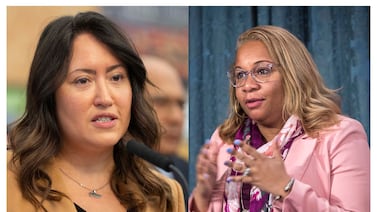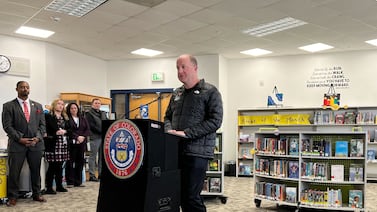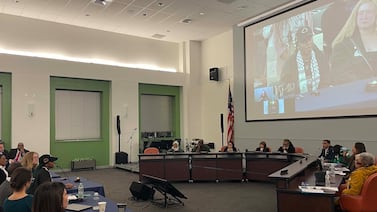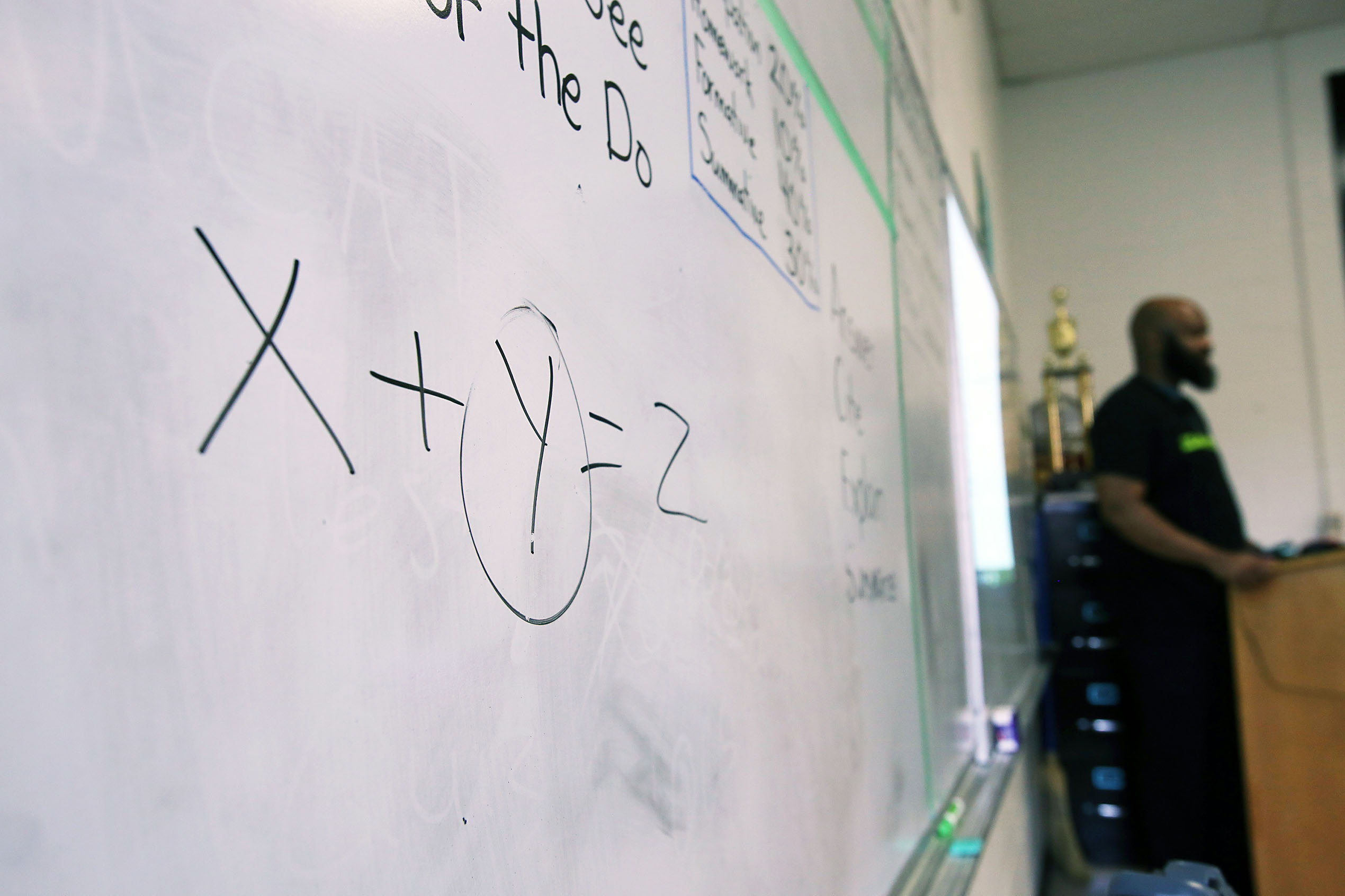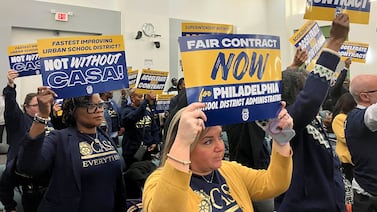Sign up for Chalkbeat’s free weekly newsletter to keep up with how education is changing across the U.S.
As schools prepare for the next academic year, a Supreme Court decision allowing religious parents to opt out of LGBTQ+ inclusive instruction will likely push educators to rethink how they approach inclusive content.
Some teachers may shy away from teaching about topics religious families may object to, while others could look for ways to maintain inclusivity in the classroom while complying with opt-out requests.
The Supreme Court, in its 6-3 ruling in Mahmoud v. Taylor, sided with religious parents in Montgomery County, Maryland, who sought the right to opt their children out of LGBTQ+ inclusive instruction. The court said the Montgomery County school district’s policy, which prevented opt-out for LGBTQ+ inclusive storybooks, interfered with a parent’s right to “direct the religious upbringing of their children.” A federal appeals court will continue to review the case.
Advocates for inclusive curriculum fear Friday’s decision lays the foundation for parents nationwide to opt their children out of material that they say conflicts with their religious beliefs — and could change how teachers approach teaching about inclusive content for all students.
Some educators are already beginning to think about how they will adapt their curriculums in the face of the ruling and the federal push to remove diversity, equity, inclusion, and the discussion of gender identity from schools.
In a dissent joined by the two other liberal justices, Justice Sonia Sotomayor argued that allowing students to opt out of any lesson plan or story time that might challenge their family’s religious beliefs will “impose impossible administrative burdens on schools.”
“The result will be chaos for this Nation’s public schools,” Sotomayor wrote.
Some believe giving parents the right to opt their children out of lessons will not drastically change public education. Most schools, including those in Montgomery County, already allow kids to skip lessons related to sex education or human sexuality. A recent survey from the Pew Research Center found that nearly half of K-12 teachers support parents’ rights to opt their children out of learning about sexual orientation and gender identity at school — suggesting that many would be willing to accommodate such requests.
Yet, a 2024 survey by the RAND corporation found that only 3% of teachers thought that limits on discussing race or gender in the classroom had a positive impact on their students. Ten times as many teachers thought these limitations had a negative effect.
Nearly two-thirds of teachers reported self-censoring how they talk about certain social and political issues in the classroom due to parental pushback, job security, and unclear guidelines. As a result, teachers felt they were unable to provide students the opportunity to learn from different perspectives or see their own identities represented.
Opt-outs may change inclusive education for everyone
If the Mahmoud v. Taylor ruling sparks an increase in opt-out requests, educators’ workloads could easily double as they are pushed to create separate activities and instructional materials for students who have opted out.
“These students aren’t just going to sit around the hallway waiting. They have to be engaged,” said Stacie Brensilver Berman, a clinical assistant professor in the Teaching and Learning department at New York University Steinhardt and a veteran high school teacher. “That is a lot of work, and it’s a lot to ask.”
Rather than create a separate curriculum for students based on opt-out status, many teachers may choose to forgo the LGBTQ+ material altogether.
Originally, Montgomery County Public Schools allowed parents to opt out of books explicitly centering on LGBTQ+ themes such as “Love, Violet,” a story about a girl who worries her same-sex crush won’t like the valentine she made for her, and “Uncle Bobby’s Wedding,” which follows a girl tentative about her uncle’s marriage to his boyfriend. However, a year after the curriculum was introduced, the district changed its policy citing in part that individual principals and teachers could not accommodate the growing number of opt-out requests.
Tiferet Ani, a former teacher and content specialist at Montgomery County Public Schools who now sits on the board of History UnErased, a national provider of LGBTQ-inclusive history curriculum, believes students shouldn’t be deprived of the opportunity to learn about the existence of LGBTQ+ people and the fact that they have the legal right to exist and marry.
Ani adds that kids are likely to be exposed to LGBTQ+ identities regardless of whether it’s taught in the classroom. If kids don’t have access to LGBTQ+ inclusive instruction in the classroom, Ani said, students will miss out on “the opportunity to have that dialogue with a teacher rather than on a playground.”
In addition, public schools should prepare students for the real world, “not a sanitized version of it,” said Keri Rodrigues, president of National Parents Union. Rodrigues is afraid the absence of LGBTQ+ inclusive material in schools will deprive students of “the opportunity of being prepared to interact with people who are different from them, to learn from them, and to be able to be cooperative and successful in society.”
But not everyone agrees that inclusivity should be a goal of public schooling. Nearly three-quarters of Democrats believe public schools should teach children to embrace differences, compared with just over a third of Republicans.
“A classroom environment that is welcoming to all students is something to be commended,” Justice Samuel Alito wrote on behalf of the majority. “But such an environment cannot be achieved through hostility toward the religious beliefs of students and their parents.”
Group work, projects: some ways teachers can adapt lessons
Teachers can find ways to accommodate opt-out requests and embed inclusivity in their curriculum without taking on additional work, according to Berman who has worked closely with teachers to introduce potentially controversial topics into the classroom.
She says small-group work and projects can be easy alternatives that allow teachers to cover material without infringing on opt-out requests.
Teachers can provide students with a list of LGBTQ+ inclusive project topics, so everyone in the class can work on the same assignment with room for individualization. For younger students in kindergarten and first grade, Berman says kids can work in groups or stations so some might be working on an art activity in one part of the room while others listen to a read-aloud.
Educators can also normalize inclusion in everyday instruction, says Jocardo Ralston, a veteran New York City teacher working with History UnErased. As an example, he points out that it’s impossible to talk about computer science without acknowledging the contributions of Alan Turing, a World War II codebreaker often credited as the “father of theoretical computer science.” Turing was prosecuted by the British Government for homosexuality, which was illegal at the time in Great Britain.
Before parents opt their child out of LGBTQ+ material, Rodrigues encourages families who are concerned about what’s being taught in the classroom to engage in a meaningful conversation with their teacher and principal and look at the books in the curriculum themselves. But she also insists that educators and school districts need to be open and transparent about what is being taught in classrooms so that parents can understand the goals of their instruction.
Norah Rami is a Dow Jones education reporting intern on Chalkbeat’s national desk. Reach Norah at nrami@chalkbeat.org.


